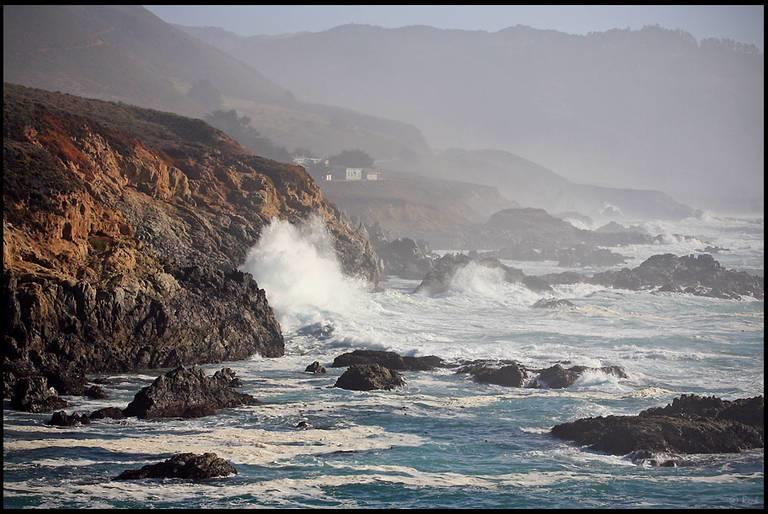
Day and night, the vast waters of the ocean press and recede along the shorelines of Earth’s every continent in accordance to the celestial movements of our planet in relation to the sun and the moon. This tidal movement is particularly pronounced in certain areas, like the Bay of Fundy, for example, where Spring tides can reach a height of 50 feet or more.
Innovators have long recognized the potential to capture great quantities of clean, free energy from these tides that can be used to spin turbines and readily produce electricity. Records of ocean power conversion date back to 900A.D. where the power of tidal movement was used to grind grains. The first modern commercial tidal power was installed off the coast of St. Malo, in Northern France. Installed in 1965, it has been operating continuously since then, producing 240 MW with every tide. This plant operates using a tidal barrage, which is a type of dam that closes off a basin with gates, captures the tidal flow, then releases it back through a turbine. This is still the most common type of tidal plant in use today, though there are two other types: the tidal fences and tidal turbines.
Tidal fences block a channel directing the tidal flow through turbines that are contained within the fence.
Tidal turbines are freestanding machines that can be thought of as underwater wind turbines, spinning as the tidal flow moves past them.
Because these are purely mechanical device, with no boiling fluids or heat transfer required, efficiencies are quite high, generally in the neighborhood of 80%. Unlike solar and wind, the power coming from these systems is quite predictable, though, like those other renewables, it is also not continuous. They only generate power during tidal surges which occur roughly 10 hours per day. The other issue is the ecologically sensitive areas where these turbines are often placed. Their impacts on biodiversity in fragile coastal ecosystems, while not always completely understood, can often be quite harmful. Let’s rack up the pluses and minuses.
Tidal Power Pros and Cons
Pros
- Renewable. Requires no fuel.
- Emission-free
- Reliable, a plant can last 100 years
- High efficiency
- Predictable output
- Could potentially provide a storm surge barrier.
- Environmental impacts are local, not global
- Expensive to build
- Very location specific (only 20 sites identified with high potential)
- Non-continuous, storage or grid-backup required
- Locations are often remote
- Barrages may restrict access to open water
- Can change tidal level of surrounding area
- Impact on fish, marine mammals and birds
- Disrupts regular tidal cycles
- Decreases salinity in tidal basins
- Mud flats (where many birds feed) adversely impacted
- Captures dirt, waste and pollution near the coast
- Reduces kinetic energy in the ocean
As you can see, tidal power can be expected to play a small, yet not insignificant role in the overall renewable energy ensemble. It has been estimated that it could potentially produce 20% of Britain’s electricity. More research is required to understand how best to tap this resource with minimal environmental harm. Cost also remains a barrier at the moment, but that could change, either through product innovation, or through price increases in other sources. The baseline technology is basically the same as what was used in the 60's which suggests that there are opportunities for innovation. Indeed, Rolls-Royce recently announced a 500 kW tidal stream plant, a type of tidal turbine that has become operational at a test facility, 40 meters deep off the cost of Scotland. Deployed last June it had already delivered 100MWh as of October.
***
What about other energy sources?
- Pros and Cons of Wind Power
- Pros and Cons of Fusion Power
- Pros and Cons of Tar sands oil
- Pros and Cons of Solar Heating and Cooling
- Pros and Cons of Concentrating Solar Power
- Pros and Cons of Solar photovoltaics
- Pros and Cons of Natural Gas
- Pros and Cons of Fuel Cell Energy
- Pros and Cons of Biomass Energy
- Pros and Cons of Combined Heat and Power
- Pros and Cons of Clean Coal
- Pros and Cons of Algae Based Biofuel
- Pros and Cons of Liquid Flouride Thorium Power
- Pros and Cons of Tidal Power
- Pros and Cons of Nuclear Energy
[Image credit: rickz: Flickr Creative Commons]
RP Siegel, PE, is the President of Rain Mountain LLC. He is also the co-author of the eco-thriller Vapor Trails, the first in a series covering the human side of various sustainability issues including energy, food, and water in an exciting and entertaining format. Now available on Kindle.
Follow RP Siegel on Twitter.

RP Siegel (1952-2021), was an author and inventor who shined a powerful light on numerous environmental and technological topics. His work appeared in TriplePundit, GreenBiz, Justmeans, CSRWire, Sustainable Brands, Grist, Strategy+Business, Mechanical Engineering, Design News, PolicyInnovations, Social Earth, Environmental Science, 3BL Media, ThomasNet, Huffington Post, Eniday, and engineering.com among others . He was the co-author, with Roger Saillant, of Vapor Trails, an adventure novel that shows climate change from a human perspective. RP was a professional engineer - a prolific inventor with 53 patents and President of Rain Mountain LLC a an independent product development group. RP was the winner of the 2015 Abu Dhabi Sustainability Week blogging competition. RP passed away on September 30, 2021. We here at TriplePundit will always be grateful for his insight, wit and hard work.














